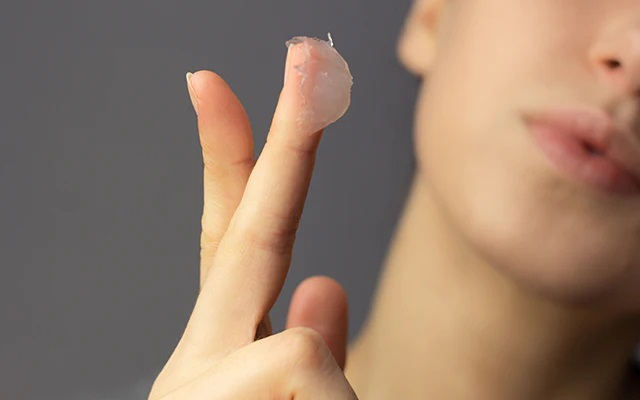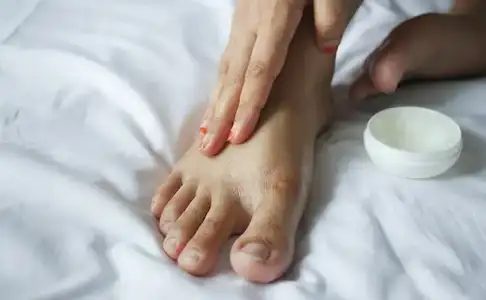How Safe Is Vaseline For Your Skin?

Vaseline is an essential skin care product found in every household worldwide. Vaseline has been a proven treatment procedure for centuries, from dry skin problems to wound healing. However, vaseline has some potential side effects that everyone should be aware of. In this article, let’s understand how vaseline benefits your skin, how to use it correctly, and when to avoid it to avoid some side effects.
What is Vaseline?
Petroleum jelly is made from a combination of waxes and mineral oils. Vaseline, also known as multi-hydrocarbon, white petrolatum or soft paraffin, is a semi-solid jelly-like substance known for its loaded coating and lubricating properties.
In addition, it is one of the most used ingredients in various skin lotions, creams and cosmetic products due to its skin-protecting and smoothing properties.
Benefits of Petroleum Jelly for Skin
1. Getting Rid of Dry Skin
The application of Vaseline creates a protective layer on the epidermis and prevents moisture loss from the skin.
2. Helps Skin Beautification
Vaseline helps to cover skin wounds caused by minor cuts, scrapes and scrapes. It helps to keep the injured skin moist, which is necessary for faster beautification, and prevents itching and scarring.
3. Helps Prevent Friction
Rubbing is a type of skin irritation caused by friction in skin folds (eg underarms, inner thighs, etc.) or between the skin and clothing that doesn’t fit properly. The best way to prevent friction is to apply Vaseline to these types of areas.
4. Treats Diaper Rash
Applying Vaseline to the baby’s skin at each diaper change can help control the redness in 4-5 days. However, the baby’s skin should be as clean and dry as possible to prevent diaper rash.
5. Moisturizes Nails
Applying Vaseline regularly to the cuticles and nails helps control the brittleness and chipping of the nails. For the best results, you should apply Vaseline to your nails while they are damp.
Vaseline Side Effects
Some potential but rare side effects of using Vaseline include:
Clogged pores:
Some people, especially those with oily skin, may develop acne due to clogged pores caused by applying too much Vaseline. To prevent discharge, you should clean your skin well before applying Vaseline and do not leave it on the skin for a long time.
Allergies:
Some people tend to be sensitive to petroleum-derived products and may develop allergies when Vaseline is applied.
Aspiration Risks:
In some individuals, especially children, aspiration pneumonia may develop when Vaseline is applied to the nasal area.
Infections:
If you do not clean your skin or allow it to dry properly before applying Vaseline, it may cause some bacterial or fungal infections. Also, bacteria can spread from contaminated vaseline jars.
After using Vaseline, any of the above-mentioned side effects or itching/swelling, redness, difficulty in breathing, dizziness, etc. If you notice any of these symptoms, seek medical attention immediately.
Vaseline is for external use only. Do not take the work internally in any form.
How to Use Vaseline?
- Take a small amount of Vaseline using your fingers and gently apply a thin layer to your clean hands, legs and feet.
- You can also gently apply it to your face and neck if you have severe dry patches.
- It is better to apply Vaseline to slightly damp skin to lock in moisture.
- Avoid applying too much as it can create a thick layer on your skin.
- To combat the dryness of your skin, you can apply Vaseline once a day after bathing.
- However, if you are in humid environments, avoid using it for the skin.
Refined Vaseline Vs. Unrefined Vaseline
The difference between refined and unrefined vaseline lies in the manufacturing process of the two. Refined Vaseline is the result of rigorous distillation processes and its use is confident. On the other hand, unrefined petrolatum contains polycyclic aromatic hydrocarbons (PAHs), which are listed as carcinogens and have contact with different types of cancer.
Additionally, researchers suspect that PAHs are endocrine disruptors that manipulate hormonal functionality in humans. This is related to fertility and the immune system, kidneys, blood, spleen, lungs, liver, fetus development etc. may result in other related health conditions.
Besides PAHs, the petrolatum content in virgin mineral oils and unrefined vaseline is hazardous to human health and is listed under carcinogens. For this reason, vaseline should never be used in an unrefined form.
Properly refined petroleum jelly often includes refining processes that remove even the slightest traces of PAHs and other carcinogens from petroleum jelly. However, to reduce the possible risks refined vaseline produced by trusted brandsis more preferable.
When Should Vaseline Not Be Used?
Dermatologists recommend avoiding vaseline if you have acne-prone, oily or combination skin. This is because it can clog pores and leave your skin heavy and oily. Also, in the skin Using Vaseline as an emergency treatment for sunburns is unbelievable, as it can aggravate symptoms by trapping heat.
The word ‘vaseline’ is a combination of ‘wasser’ (German for water) and ‘elaion’ (Greek for olive oil).
How to Remove Vaseline from Skin?
Vaseline leaves a waxy coating on your skin that repels water. Therefore, using only water and ordinary soap may not provide an effective cleanness to your skin. In addition to warm soapy water, it is recommended to use a konjac sponge or a damp microfiber cloth to remove Vaseline from your skin.
To remove Vaseline from your face, use a cleansing oil to dissolve traces, dirt and sebum on your face before washing it off. Additionally, use a gentle facial toner after washing. is one of the effective options for removing petroleum jelly from facial skin.
Vaseline Alternatives
Some of the natural alternatives to petroleum jelly include beeswax, coconut oil, shea butter, avocado oil, jojoba oil, cocoa butter, olive oil, etc.
Conclusion:
- Vaseline contains a combination of waxes and mineral oils with great covering and lubricating properties.
- Vaseline is best used to treat dry skin related issues.
- Excessive and misuse of petroleum jelly can cause some side effects such as clogged pores, pneumonia, allergies and infections.
- If you have acne-prone, oily or combination skin, you should avoid using Vaseline.
- Always opt for refined petroleum jelly, as the unrefined form can cause potential and significant health concerns.
- Shea butter, cocoa butter, coconut oil, olive oil, etc., which have many benefits for your skin. Natural ingredients such as vaseline are always better alternatives to vaseline.
- On-Site Comments















Comment